I always said that if I ever replaced my trusty Jeep Grand Cherokee it would be with one of two vehicles: a full size pickup or “one of those V8 4runners”. When the time finally came to make the switch, I chose a 4th gen Toyota 4runner.
During my search I compiled as much info as I could find online and talked with a few mechanics and Toyota dealer employees. I’ve decided to lay out this info into a 4th gen Toyota 4runner buyers guide to aid anyone else out there with their search. If you’re currently considering one of these as your next vehicle, this buyers guide is for you.

4th Generation Toyota 4runner Overview
The Toyota 4runner is one of the most loved SUVs on the planet. They’re known worldwide for both their off road prowess and legendary reliability. Over time, the 4runners’ reputation has been proven thanks to its huge following and strong resale value. These trucks are indeed the real deal.
Check out this article to learn how the 4Runner got its name originally.
Toyota’s 4th generation of their beloved 4runner was sold from 2003 to 2009. Many believe (myself included) that this version of the 4runner is the best of all. The 4runner is currently deep into its 5th generation but newer doesn’t always mean better. Don’t get me wrong, the new ones are fantastic too.
There’s a few reasons why I think the 4th gens will go down in history as the best version of the 4runner though:
- Only generation that Toyota has offered a V8 engine
- Perfect combination of comfort and rugged capability
- No modern direct injection engines
- Simple, timeless styling
- By far the best for towing (V8 models)
- Nearly the same chassis as a brand new one
- Much more affordable than a 5th gen
That first reason is the biggest one for me. During the entire lifetime of the 4runner, Toyota has only offered a V8 for these 7 years. It’s not just any V8 either – it’s the legendary 2UZ pulled from their truck and Lexus lines.
They’ll likely never have a V8 again if their current direction is any indication. I believe these “hotrods” of the 4runner family will become the holy grail as time goes on. There’s a reason why they’re so hard to find on the used market – if someone has one, they’re likely not willing to let it go.
Are you considering a 2nd Generation Toyota Tacoma? Make sure to check out that buyers guide here:
A forum user mentioned that a head Toyota engineer once told him that in his opinion:
“the 4th gen 4runner was the best 4×4 Toyota had ever produced in terms of reliability, longevity, and durability”.
That’s a pretty bold statement from someone who is possibly the most knowledgeable on the subject.

4th Gen 4runner Models – The Differences
4th Generation 4runners had 3 popular trim models – SR5, Sport Edition, and Limited. The differences between these were based on comfort and appearance options. All models were offered with both the V6 or V8 engine and in 2 wheel drive or 4 wheel drive.
Interestingly, Canadian 4runners were only sold with 4 wheel drive. Here’s a breakdown of the differences between each 4runner model:
SR5
The SR5 trim level was the entry level 4runner. These had the highest sales figures. Despite being the base model, they still offered plenty of features. The appearance of the SR5 is a bit blander than other models.
Sport Edition
Bridging the gap between an SR5 and Limited is the Sport Edition 4runner. These are a nice compromise between the other two models. The most noticeable attribute of the Sport Edition is their large hood scoop. This is the only model it’s available on.
Other styling features may include tubular roof rails and side steps, 17″ 6 spoke wheels and smoked chrome grille and headlight housings. Sport Edition 4runners also have X-REAS suspension and model-specific seat fabric.
Limited
The Limited 4runner is the top of the line with all of the bells and whistles. Features include heated leather seats, illuminated running boards, dual zone climate control, rear air suspension on V8s, anti-theft system with immobilizer, and a Homelink garage door opener. The JBL Synthesis audio system was standard on the Limited. 2006 and newer models also came with 18″ 6 spoke wheels.
Rare 4th Gen 4runner Models and How To Identify Them:
Toyota offered two special new models in 2008 and 2009. These have become rather rare finds nowadays and can be quite sought after.
Urban Runner
The Urban Runner was available only in 2008 and 2009. It came in three colors – white, silver and black. This was more of an appearance package that added some of the features from a Limited to a Sport Edition. They also had special alcantara/leather seats that were only available on this model.
The Urban Runner featured different badges and the 18″ wheels from the Limited. In 2009, it was offered in “Blizzard Pearl”. This was the only 4th gen 4runner to ever be painted in pearl white.
Trail Edition
The Trail Edition 4runner was only available in 2009 (the final year of production). Much like how the Urban Runner was an upgrade to the Sport Edition, the Trail Edition was an upgrade to an SR5.
These were more of an off road specific model and were only sold as V6 4x4s. The Trail Edition was essentially an FJ Cruiser with a 4runner body on it. These were geared toward people who wanted the capability of an FJ with the mature styling of the 4runner.
This was the only 4th gen 4runner to ever feature an electronic locking rear differential. They also had Bilstein monotube shocks, 16″ wheels from the FJ, waterproof fabric seats, and a detachable TomTom navigation unit. The Trail Edition 4runners were only sold in silver, white and dark grey.
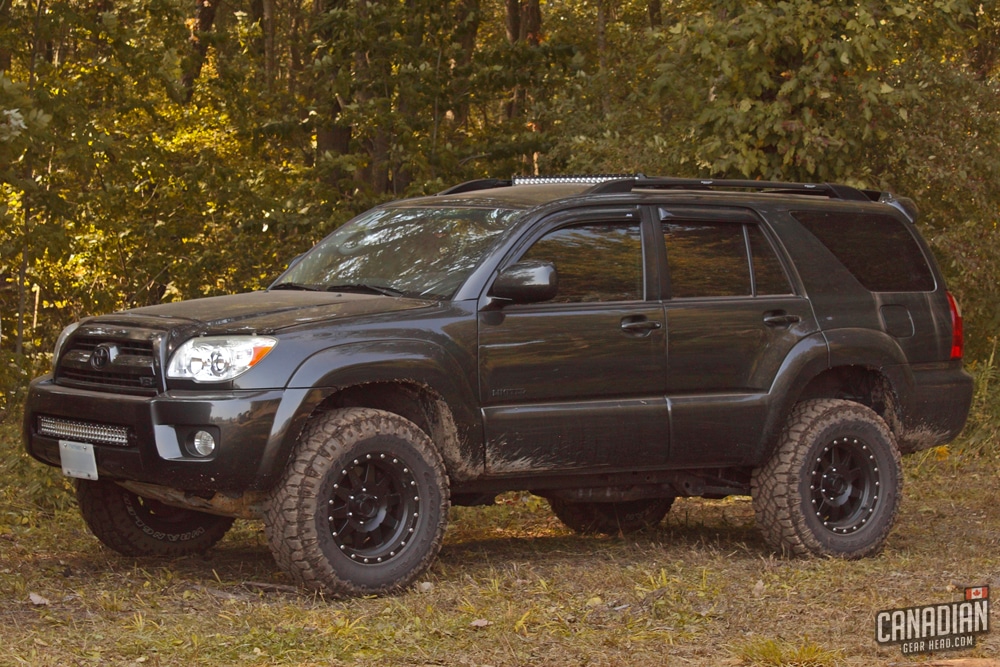
4th Gen 4runner Year to Year Changes
The 4th generation 4runners can be divided into 2 different eras. 2003-2005 were considered the early years, or pre-facelift. In 2006 it received a few cosmetic updates.
2003
This was the first year of the 4th gen 4runner and it was a huge change from the previous 3rd gen model. These are the cheapest and easiest to find on the used market. Many popular features were available throughout the entire generation so there’s no need to avoid these. The V8, air suspension, X-REAS suspension and JBL audio were all options right from the very beginning.
2004
The only notable changes for this model year were the option of a 3rd row seat, removal of the transmission dipstick and addition of a tire pressure monitoring system.
2005
This was sort of an oddball year that bridged the gap between the pre and post facelift 4runners. These received a few mechanical upgrades but kept the same styling from the older models.
New for ’05:
- V6 models now had a 5 speed transmission instead of the 4 speed
- V8 models now had VVT-i (variable valve timing) which helped to boost horsepower and fuel economy. With that came the new air injection emissions system. Horsepower jumped from 235hp to 270hp, and torque went from 320 ft lbs to 330 ft lbs.
2006
This was the year the 4runner underwent a facelift. Most of the changes were cosmetic since it received engine and transmission upgrades in the previous year.
New for ’06:
- revised front bumper
- revised grille
- projector headlights
- round shaped wheel wells replaced the old square shaped ones
- LED tail lights
- revised rear bumper
- new 18″ wheels for the Limited
- memory seats added to the Limited
It’s worth noting that this was the year the horsepower rating system was changed. The 2005 ratings for the V8 are the ones that should be used to compare with the 03/04 numbers. The new figures are inaccurate in my opinion since they’re lower than the original version of the motor. I’ve driven both versions and there’s just no way that’s the case.
2007
No major changes, this was a carryover year.
2008
The only notable changes for 2008 were a slight difference in the front bumper styling and a “VSC Off” switch on all models. The Urban Runner was released this year.
2009
The final year for the 4th gen 4runner. The only changes for 2009 were the location of the rear power window switch from the dash to the center console and the shape of the overhead console. The Trail Edition and Urban Runner were both available this year.
4th Gen Toyota 4runner Engines
Toyota offered 2 different engines in the 4th generation 4runner: a 4.0 liter V6 and a 4.7 liter V8. The 1GR-FE V6 was also used in vehicles like the Tacoma and FJ Cruiser. The 2UZ-FE V8 was borrowed from the Tundra, Sequoia, and even the Lexus GX470.
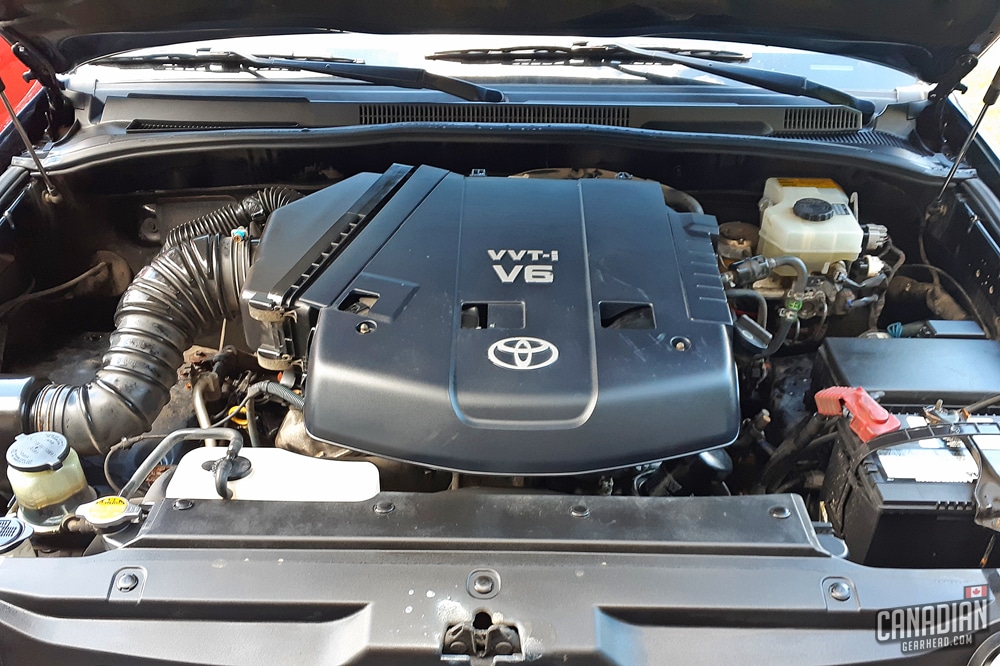
4.0L V6 (1GR-FE)
The V6 engine was brand new for 2003. It was the first all aluminum engine Toyota ever put in a truck. The 4 speed transmission that accompanied it was carried over from the 3rd gen 4runner.
This engine is a bit rougher and noisier than the V8 but requires less maintenance thanks to its timing chain. The 4.0L was also used in the Land Cruiser, Tacoma, Tundra and FJ Cruiser. This V6 is rated at 245 hp and 283 lb ft of torque.

4.7L V8 (2UZ-FE)
Toyota borrowed the 4.7L V8 from its other successful trucks. It’s found in the Land Cruiser, Tundra, and Sequoia as well as the Lexus GX470 and LX470. It’s a 32 valve quad cam engine with a cast iron block and aluminum heads. Many people believe this is one of Toyota’s most legendary engines in terms of durability (second to the 2JZ found in the Supra).
It’s noticeably smoother and quieter than the V6. This is possibly the reason why the V6 wasn’t available in the Lexus version of the 4runner (GX470). Unlike the V6 though, the V8 requires the timing belt to be changed approximately every 100,000 miles (160,000 kms). The 4.7L V8 is rated at 235 hp and 320 ft lbs of torque for 03/04 models and 270 hp and 330 ft lbs of torque for 05+ models.
There’s an endless debate over which engine is the better choice for the 4runner. Luckily, you really can’t go wrong with either one. The V6 is more fuel efficient and doesn’t have a timing belt, while the V8 has better power, torque, and sound while being slightly more thirsty. Talk to any 4runner owner and they’ll likely tell you the best engine is… the one they have.
For an in depth comparison of the V6 and V8 engines, check out this article:
4th Generation 4runner 4WD System
The 4×4 system in the 4runner didn’t change throughout the entire 4th generation. Both V6 and V8 models use a 2 speed transfer case with a Torsen limited slip differential. Under normal operation, it sends 40% to the front wheels and 60% to the rear.
When it senses wheel slip, it will send as much as 53% to the front or 71% to the rear. V6 models use a multi-mode, shift on the fly 4WD while V8 models had full time 4WD that can be shifted to 4 low. The transfer case can be locked in both 4 high and 4 low modes. All 4×4 4runners have Traction Control, Vehicle Stability Control, Downhill Assist Control and Hill Start Assist Control.
Thinking of taking your 4runner off-roading? Read this article first!
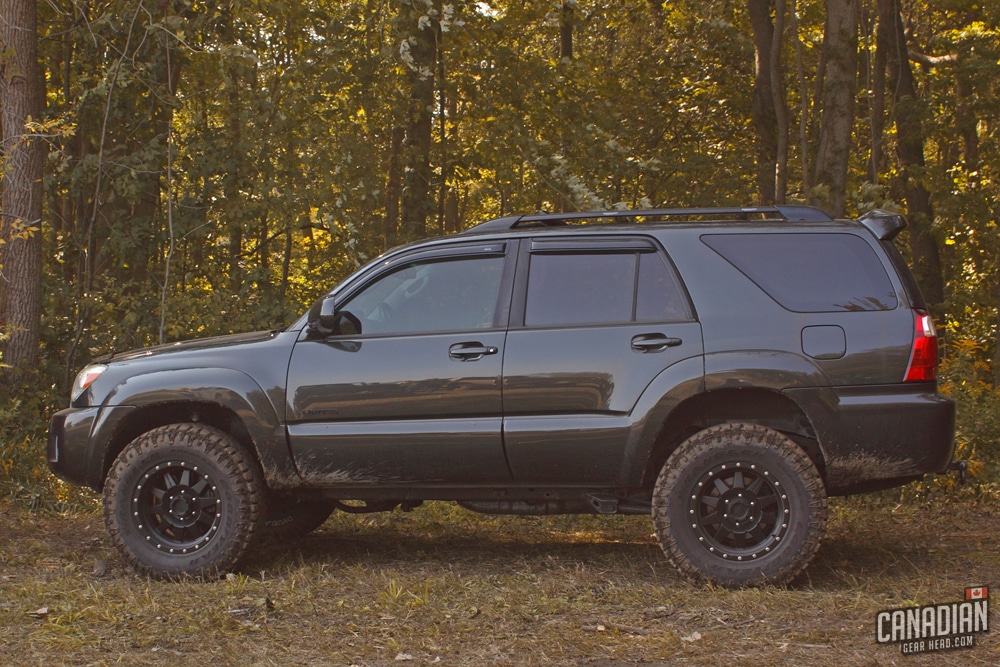
4runner Suspension Design
All 4th gen 4runners have independent front suspension and a solid rear axle. Auto leveling and height adjustable rear air suspension was available on V8 Limited models. The rear coil springs are replaced with air bags that can raise and lower the rear of the vehicle. The Rear Air Suspension was only offered in combination with Toyota’s X-REAS suspension.
What is X-REAS Suspension?
This is Toyota’s nifty shock system that diagonally links each corner of the truck. It was actually designed by Yamaha. Each shock is connected to its opposite corner with a hydraulic line. This system was created to help with body roll and on road handling. X-REAS was only available on the Sport Edition and Limited models.
4th Gen 4runner Towing Capacity
4runners equipped with the 4.0L V6 engine are rated to tow 5,000 lbs. Models with the 4.7L V8 can tow 7,000 lbs (7,300 for 2WD versions). The V6 and V8 models both come with different trailer hitches. The V6 is more of a bumper-pull and tucks up nice and high. The V8 hitch hangs lower and mounts directly to the frame.
Strangely, some Canadian V8 models were actually sold with the V6’s hitch. Mine is one of them. I would recommend sticking with the tow rating of your hitch rather than your engine. A V8 with a V6 hitch should only tow 5,000 lbs to be safe.
Want to know everything there is to know about towing with a 4runner? Check out my experience with pulling a camper 10,000 kms across the country:

The curb weight of a 4th gen 4runner is somewhere between 4,000lbs and 4,400 lbs (depending on options) making it a bit of a lightweight for towing. It’s not going to tow as well as a full size pickup truck. But in the case of the V8 model, a mid sized SUV that can tow 7,000lbs is quite impressive.
For more info on towing with a Toyota 4runner, check out this article:
4th Gen 4runner Gas Mileage
4runners are not particularly fuel efficient vehicles regardless of what engine you choose. The 4.0L V6 has an EPA rating of 17 MPG city and 21 MPG highway. The 4.7L V8 has an EPA rating of 15 MPG city and 19 MPG highway.
My personal 4runner has a 4.7L V8, Doug Thorley headers, K&N filter, lifted suspension and heavy 33″ tires. It gets a hand calculated 12 MPG city and just shy of 20 MPG highway.
Unfortunately, this is the price you pay to have such an otherwise capable SUV.
Make sure to read this article if you’re interested in getting the best fuel economy out of your 4runner:
Shared Platforms – Related Toyota Trucks
The 4th gen 4runner is part of Toyota’s global 120 Series platform. It shares this with the Lexus GX470, FJ Cruiser, Tacoma/Hilux, Land Cruiser Prado, 5th gen 4runner and Hilux Surf. This means the 4runner shares much of the frame design, suspension and even the drivetrain with these vehicles. This helps replacement parts to be not only widely available but cost effective too.
These Toyotas are vehicles you can likely take anywhere in the world and still be able to find parts to fix them. That’s a huge bonus for adventure seekers.
Wheels from the FJ Cruiser, GX470, 1st gen Tundra, 1st gen Sequoia and Tacoma will all fit the 4runner. Make sure to double check that any 16″ versions will clear the front brakes though.
The Best Year and Model 4runner to Buy
This is really a trick question because you can’t go wrong with any year 4th gen 4runner. They’re all capable and reliable. As long as you’ve checked the VIN to see its accident history, any rust free 4runner (with documented service records preferably) will be a good purchase.
I would recommend buying the nicest and newest one your budget will allow. In my opinion, the 2006 and newer facelifted models with the V8 are the most desirable. It all comes down to personal preference.
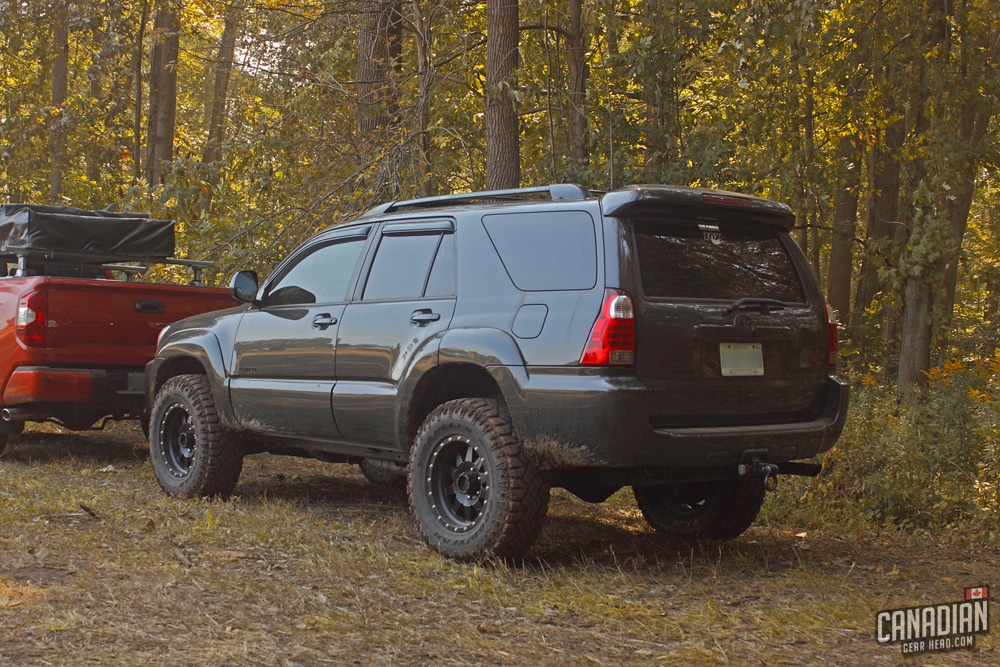
4th Gen 4runner Reliability
Reliability is one of its most well-known character traits. How long will a 4th Gen 4runner last?
There really aren’t many major issues to worry about with the 4th gen 4runner. As long as they’re maintained and kept free of rust, there’s no reason why they won’t last for 500,000 miles (804,000 kms) or more.
One of the 4runner’s biggest strong suits continues to be its longevity. That being said, no vehicle is perfect.
Common 4th Gen 4runner Problems:
In the 15 years since it was first released, these are the common problems people have found with the 4th gen 4runner:
1. Cracked exhaust manifolds on the 4.7L V8
This is noticeable by a loud ticking noise coming from the engine especially when it’s cold. If the noise speeds up when the engine speeds up, it’s likely that an exhaust manifold is cracked.
This is caused by a combination of things. The manifold is a one piece design that includes the primary catalytic converter. Toyota used thinner metal to help them to heat up quickly for emission purposes, and that combined with the weight of the catalytic converter hanging off the back makes them crack over time.
All of them do it eventually and it’s a fairly expensive fix. I was quoted over $2,000 CAD for one manifold alone from a Toyota dealership and that doesn’t include labor. By replacing it with another OEM part, chances are it will fail down the road again.
I chose to upgrade to a pair of headers from Doug Thorley. These are thick stainless steel and have a lifetime warranty. They’re far more reliable than the original manifold, and also offer more horsepower, torque, and fuel economy!
The size of the leak from a cracked manifold isn’t likely to be large enough to trip a check engine light or affect driveability. It’s just an annoying/embarrassing sound that will drive you crazy. This isn’t something that will leave you stranded on the side of the road so if you can live with the sound, you aren’t forced to fix it.
2. Air suspension leaks
The rear air suspension system is prone to a few failures. Leaks from the rubber airbags or fittings on the lines are common, as well as faulty height sensors. These can be a somewhat costly fix and could potentially leave you stranded in the event of a catastrophic failure.
The system is helpful when it works, but when it doesn’t it’s a pain. I converted mine to springs in the rear and got rid of the system entirely. I used a kit from Metal Tech 4×4.
3. Sticky brake calipers
Some people might tell you this only applies to earlier years of the 4th gen 4runner, but that’s not true. I have had issues with 2 calipers within a year. One rear that just needed to be cleaned up and greased, and a front that needed to be replaced. I can see in the service history that the other two have already been replaced. My 4runner is a 2007 model with the “revised” brakes.
I think this is more of an issue with life in Canada rather than an issue with Toyota. The drastic temperature changes from driving in cold weather are hard on them, not to mention the corrosion from all the road salt.
4. Air injection pump failures on 4.7L V8
I’m not sure how I feel about this one. I’ve never had an issue with mine, but others online have. There’s a couple companies that make delete kits to either cure a problem or prevent one in the future. I should probably dig deeper into this.
5. Head gasket failure on 4.0L V6
It’s been noted on the forums that the early (03/04) model V6 4runners had some issues with head gaskets. This was apparently fixed in the newer models.
6. Rust (Both the body and frame)
I believe this is the #1 killer of Toyota 4runners. These didn’t suffer from the frame recalls that the Tacoma did but they’re still very prone to rusting if not cared for. Rust throughout the undercarriage as well as on the rear hatch is quite common. If you can keep your 4runner from rusting, you can keep your 4runner forever!
7. Seized 4WD actuator
The transfer case actuator that shifts from 4WD to 4 low can seize up if not used for a long period of time. This isn’t a big deal if you never plan to take your 4runner off road. If you do, this can be a costly fix. It requires taking apart and rebuilding the transfer case in order to replace the seized actuator.
Savvy 4runner owners stick to a monthly “Use it or lose it” routine. We shift from 4 high to 4 low as well as lock/unlock the transfer case once a month. Following this routine is a great way to ensure your 4WD system works perfectly for a long time.
8. Cracked dashboard
Some 4runners located in southern climates suffer from cracked dashboards. Sometimes the prolonged heat and UV rays from the sun are just too much for them to handle. Toyota actually offered to fix a bunch of these free of charge but I believe that program has since ended.
9. X-REAS suspension problems
The X-REAS suspension is great when it works. Unfortunately, it gets worn out over time like any other shock absorber. This is more expensive than a normal system to replace because both diagonally matching shocks have to be replaced at the same time. You can’t replace one shock by itself.
Many people end up ditching the system altogether when it wears out and are able to upgrade to regular high performance shocks for less money. I replaced mine with these Fox 2.0 coilovers.
10. Driveshaft clunk
This one has been reported as a clunk sound accompanied by the feeling of something pushing the truck forward when coming to a complete stop. It might seem scary, but it’s actually no big deal. You just need to pack your driveshaft with grease and it should go away. This is not a major problem at all.
11. Dash lights burnt out
The lights behind the HVAC unit tend to burn out over time. This is a fairly easy fix that requires pulling the unit out of the dash and replacing the bulbs. They’re only a few dollars a piece and shouldn’t take long to switch out.
I share what I believe are the best modifications to start out with for your 4th gen 4runner here:
Tips and Tricks For Your 4th Gen 4runner
- Toyota recommends using 91 octane fuel but you can use 87 octane safely. The knock sensors will pull timing which will lower the power and keep the engine safe if any knock is present.
- 4runners have a “no hold start” system which means you don’t need to hold the key in the on position to start it. The starter will automatically keep cranking until the engine fires up.
- You can program the doors to either lock automatically when you shift out of park, or when the vehicle hits 13 mph.
- There’s a hidden flap inside the glove box at the back that reveals an extra secret compartment
- The rear window can be lowered remotely by pressing and holding the bottom button on the key fob. To raise it, insert the key into the lock on the hatch and turn to the right
- Holding the “Mode” button on the steering wheel audio controls will turn the stereo on and off
- There’s a trash bag holder that folds out from the back of the center console
- No need to slam the rear hatch closed. Gently resting it against the latch will allow the electric motor to pull it closed the final inch
- While driving with the moonroof open, the wind deflector automatically drops when you hit 57mph and rises back up below 45mph. This helps to cut down on wind noise on the highway
- A “burger tray” folds out from the center armrest of the back seat
- If you unlock the doors with the remote but don’t open any of them within 30 seconds, they will relock on their own
- Moving the front seat all the way forward, removing the headrest, then tilting it all the way back lines it up with the rear seat and forms a bed
Helpful Links:
Pre Purchase FAQ and General Info
Year by Year History of the 4runner

Tim is the creator of Canadian Gearhead. His experience with auto detailing and working for Toyota shows through all of the articles posted here. He runs the Canadian Gearhead site and YouTube channel full-time now and currently owns a 2007 4runner, 2006 Tacoma, and 1991 MR2. Read more about Tim:

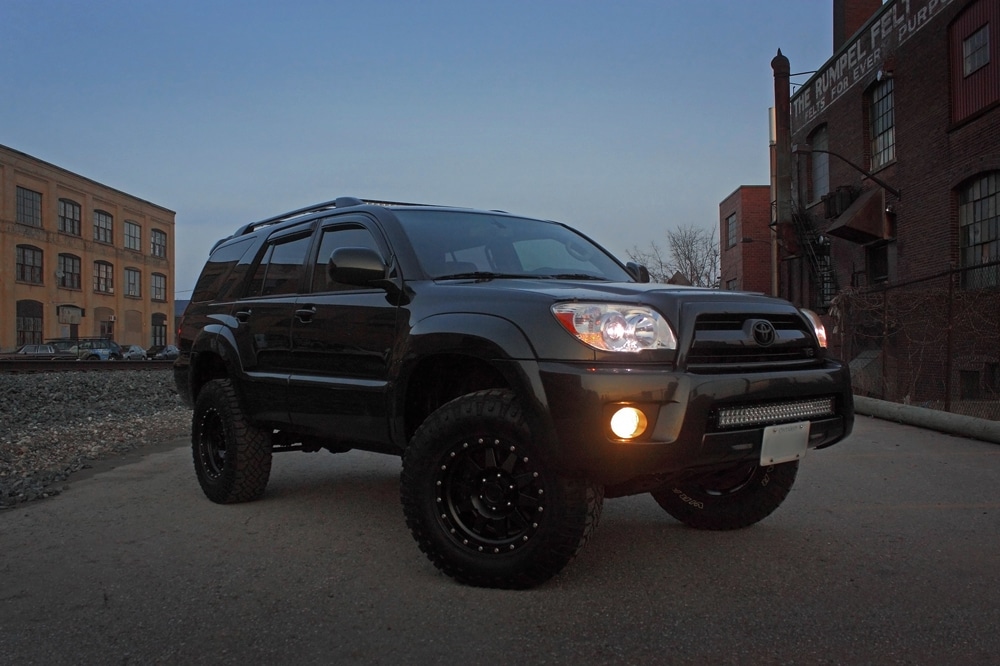


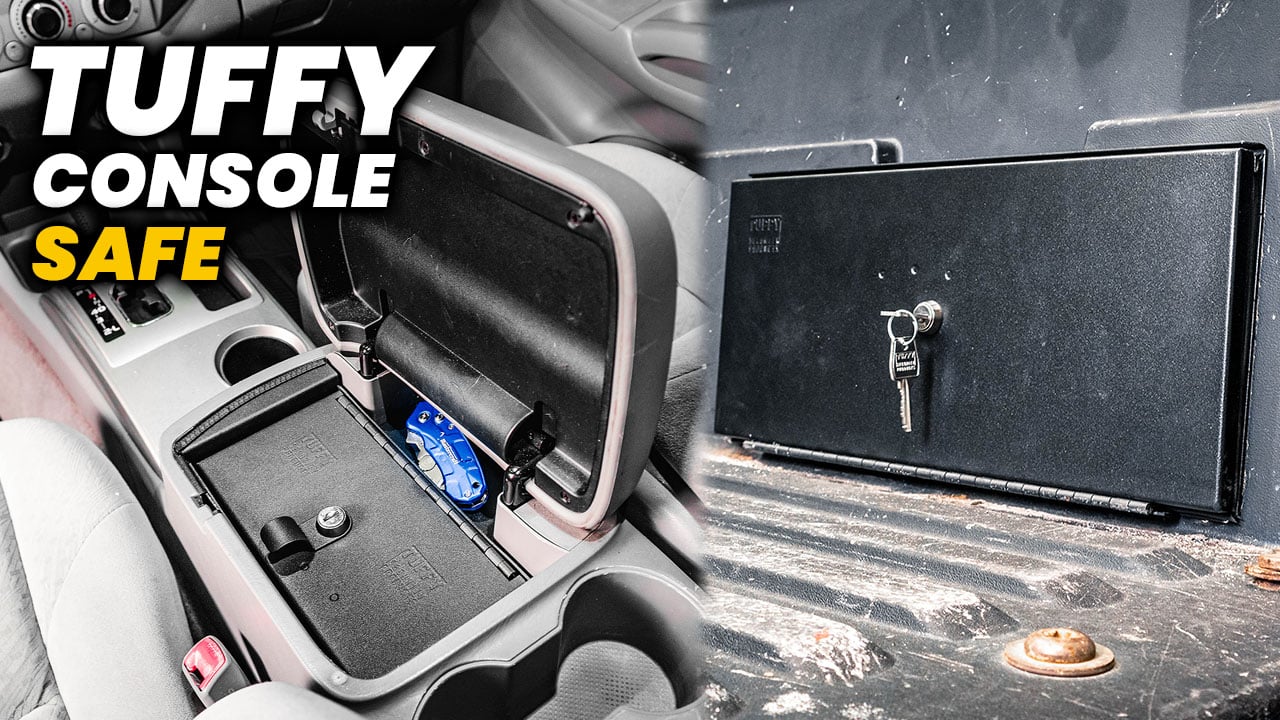
Leave a Reply